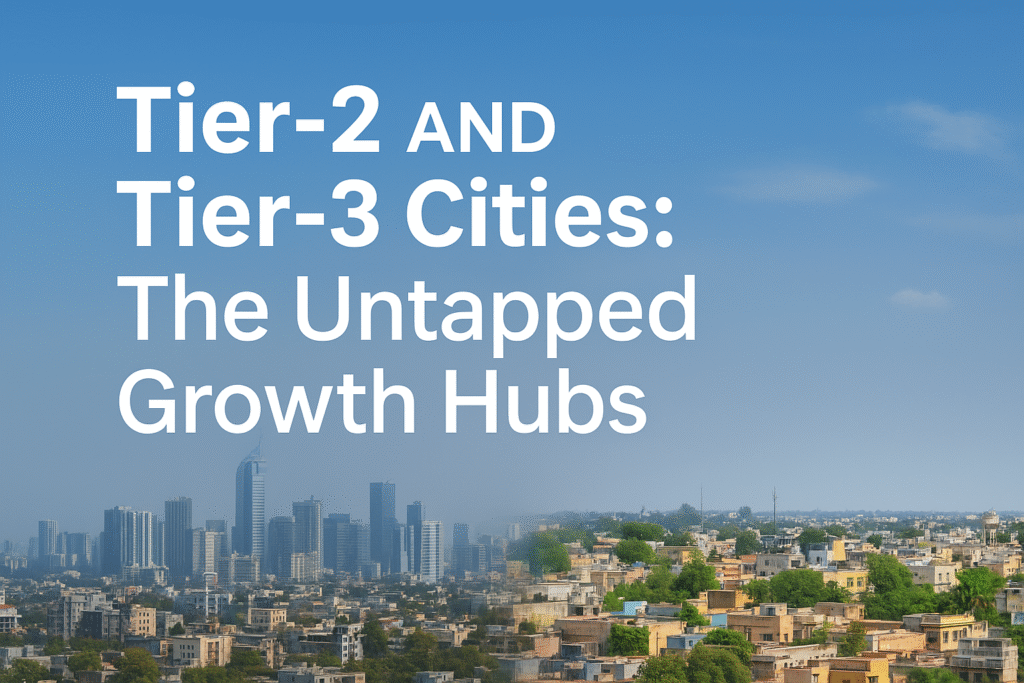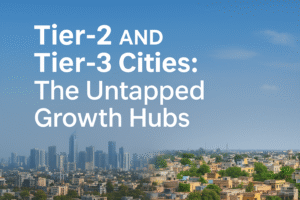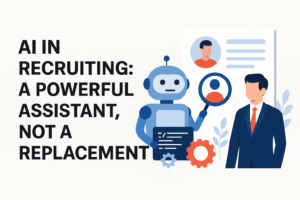Tier-2 and Tier-3 Cities: The Untapped Growth Hubs

For decades, India’s economic growth story has been told through the glittering skylines of its metros—Delhi, Mumbai, Bengaluru, Hyderabad, Chennai, Pune, and Kolkata. These cities have become magnets for job seekers, entrepreneurs, and multinational companies looking to tap into India’s booming talent pool.
But behind this dazzling façade lies a harsher reality. Metros are choking under the weight of overpopulation, skyrocketing real estate prices, daily commutes that eat away hours of personal time, and deteriorating infrastructure. For professionals, especially in mid-career stages, the dream of a stable, balanced life in metros is slipping further away.
This raises an important question: Why should growth be limited to metros alone?
India’s tier-2 and tier-3 cities—Lucknow, Bhopal, Jabalpur, Jaipur, Raipur, Gwalior, Indore, Coimbatore, Surat, and many more—are brimming with potential. With the right focus, they can become the next engines of India’s economic story.
The Commute Crisis: Wasted Time, Wasted Energy
One of the biggest pain points of metro living is commuting. On average, working professionals in metros spend 2–4 hours daily traveling between home and office. This not only drains energy but also reduces productivity, impacts mental health, and takes away quality family time.
Compare this with tier-2 cities, where shorter distances and less traffic mean employees can reach their workplace within 15–30 minutes. That’s an immediate boost to quality of life—time saved for health, hobbies, learning, or simply resting.
When we talk about productivity, it’s not just about output at work—it’s also about the balance employees carry into their roles. A relaxed, well-rested workforce is far more creative and efficient than one stressed by urban chaos.
Salary Parity: The Boldest Step Toward Change
Perhaps the most critical point in this debate is salary parity. Today, salaries in tier-2/3 cities are often 20–40% lower than in metros for the same role and skill set. This forces ambitious professionals to migrate, even if they would prefer to stay closer to home.
If companies begin offering metro-equivalent salaries in tier-2/3 cities, the game changes entirely:
- Migration slows down, reducing stress on metros.
- Locals benefit from higher wages, raising the economic bar in their regions.
- Disposable income increases, fueling local businesses and creating a 360° economic multiplier effect.
- Talent retention improves, as employees are less likely to uproot themselves for “better pay” in bigger cities.
Yes, initially, locals may face challenges adjusting to higher wage expectations. But in the long run, this shift will raise living standards and purchasing power across smaller cities.
Government Policies: The Missing Catalyst
For tier-2/3 cities to rise, government support is non-negotiable. While India has seen smart-city initiatives and SEZs (Special Economic Zones), the pace and scale remain uneven.
To attract MNCs and Indian corporates into smaller cities, governments need to:
- Offer tax incentives for companies that open offices beyond metros.
- Invest in infrastructure—better roads, airports, public transport, and digital networks.
- Simplify approvals and compliance for businesses in smaller cities.
- Develop skill hubs and incubation centers in collaboration with universities and corporates.
A proactive government–corporate handshake can bridge the current trust gap. Without it, many companies will continue fearing that smaller cities lack “world-class infrastructure.”
Quality of Life: Beyond Salaries and Jobs
Quality of life is often overlooked in the salary debate. Even if pay is the same, living standards differ drastically between metros and tier-2/3 cities.
- Housing: Real estate prices in metros are astronomical, making home ownership a distant dream. In smaller cities, families can own spacious homes at a fraction of the cost.
- Healthcare & Education: With growing private hospitals and schools in tier-2/3 cities, access to good facilities is improving rapidly.
- Cost of Living: Food, transport, and lifestyle expenses are lower, leaving more disposable income in employees’ pockets.
- Community Living: Smaller cities often preserve closer-knit social structures, reducing the sense of isolation common in metros.
This balance is especially important for mid-career professionals who are juggling careers, children’s education, and aging parents.
The Talent Pool in Tier-2/3 Cities
One misconception is that metros are the only places where skilled talent exists. The truth is far more promising.
Every year, thousands of engineers, MBAs, and graduates emerge from colleges in Madhya Pradesh, Uttar Pradesh, Chhattisgarh, Rajasthan, Bihar, and beyond. Many of them migrate to metros simply because that’s where jobs are concentrated.
If companies set up operations closer to these colleges, they get:
- Direct access to fresh talent pipelines.
- Lower hiring costs compared to ultra-competitive metro markets.
- Higher loyalty and retention, as employees are less likely to leave their hometowns.
From a recruiter’s perspective, this is a goldmine waiting to be tapped.
Women in the Workforce: Unlocking Hidden Potential
Another overlooked benefit of decentralizing jobs is the increase in female workforce participation.
In metros, unsafe commutes, high living costs, and relocation stress often force women to step back from careers. In smaller cities, where families are closer and commutes are shorter, women can balance careers and family more effectively.
Greater participation of women not only strengthens households but also adds billions to India’s GDP potential.
Sustainability and Urban Di-congestion
Metros are reaching a breaking point. Overpopulation is leading to:
- Severe air and water pollution.
- Traffic congestion and longer commutes.
- Strain on housing, healthcare, and public services.
By encouraging companies to expand into tier-2/3 cities, India can spread growth more evenly. This reduces pressure on metros while ensuring balanced development across regions. It also aligns with the global push toward sustainable urbanization.
Digital Infrastructure & Remote Work: A Bridge to the Future
With India’s rapid digital transformation—high-speed internet, 5G rollout, UPI, and remote work adoption—geography matters less than ever before.
Companies can start with hybrid models, where a portion of their workforce operates from smaller cities, supported by robust co-working spaces and digital infrastructure. Over time, this can evolve into full-fledged offices.
The pandemic has already shown us that great work can happen outside metros—now it’s time to build on that momentum.
The Bigger Picture: A Stable and Inclusive India
The Indian IT and corporate workforce may look elite from the outside, but it’s fragile within. Layoffs, constant pressure to upskill, and mid-career insecurity are pushing many into burnout.
By redistributing opportunities:
- Families can stay together instead of being scattered across states.
- Professionals can enjoy stability over endless rat-race competition.
- Smaller cities can rise as true engines of inclusive growth.
The result? A stronger, more balanced India where growth is not confined to six metros but is shared across the map.
The Road Ahead
Tier-2 and tier-3 cities are not just backup options—they are India’s untapped growth hubs. The talent exists. The ambition exists. What’s missing is the will to decentralize.
To make this vision a reality, three steps are crucial:
- Salary Parity – Pay for skills, not pin codes.
- Government Support – Build policies and infrastructure to welcome MNCs.
- Corporate Vision – Invest where people live, not just where tradition dictates.
When this alignment happens, migration slows down, local economies flourish, women re-enter the workforce, and India builds a more sustainable, resilient future.
The question is no longer if smaller cities can rise—it’s when we will let them.
#Tier2Cities #Tier3Cities #IndiaGrowth #UrbanDevelopment #EconomicGrowth #SalaryParity #WorkLifeBalance #PMO #Namo #PMMODI




